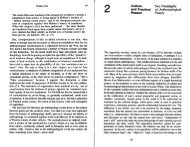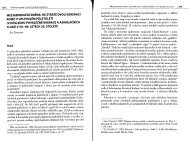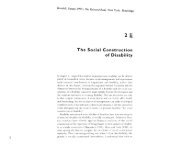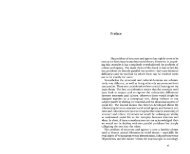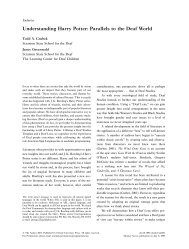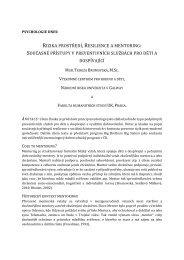Morphogenesis versus Structuration: On Combining ... - Moodle
Morphogenesis versus Structuration: On Combining ... - Moodle
Morphogenesis versus Structuration: On Combining ... - Moodle
Create successful ePaper yourself
Turn your PDF publications into a flip-book with our unique Google optimized e-Paper software.
<strong>Morphogenesis</strong> <strong>versus</strong> structuration 469<br />
1oo<br />
in tos<br />
90<br />
15%<br />
80<br />
70<br />
60<br />
50<br />
40<br />
30<br />
INITIAL Sm 20<br />
YEARS 1<br />
FIGURE II TOTAL POPULATION<br />
2 3 4<br />
accumulation, demographic distribution), but this does not affect<br />
the basic point that all structures manifest temporal resistance and<br />
do so generically through conditioning the context of action. Most<br />
often perhaps their conditional influence consists in dividing the<br />
population (not necessarily exhaustively) into social groups working<br />
for the maintenance <strong>versus</strong> the change of a given property, because<br />
the property itself distributes different objective vested interests to<br />
them at T2 (rather than abilities as in the example used). This would<br />
be the case where properties like citizenship, political centralization<br />
or wage differentials were concerned.<br />
Furthermore, what the diagram serves to highlight is that the initial<br />
structural influence does not peter out immediately, even given a<br />
collective determination to transform it (indeed here the major<br />
burden of illiteracy is only dispersed towards the end, in the last or<br />
penultimate time interval). In other words it takes time to change<br />
any structural property and that period represents one of constraint<br />
for some groups at least. No matter how short, it prevents the<br />
achievement of certain goals (those which motivate attempts to<br />
change it). Structural influences extend beyond T2 and it is essential<br />
to know whether this is because they (temporally and temporarily)<br />
resist collective pressures to change, remain because they represent<br />
the vested interests of the powerful, or are in fact 'psychologically<br />
supported' by the population. To regard every institutional regularity<br />
as the result of 'deep sedimentation' is to assimilate them all to the<br />
latter category. Yet without these distinctions it remains inexplicable<br />
when (or whether) the property will be transformed.



